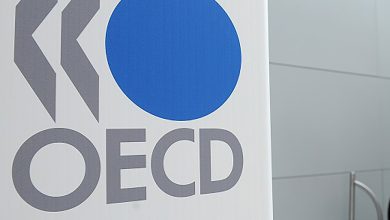China issues guidelines to ramp up green transition


<img src='https://news.cgtn.com/news/2024-08-12/China-issues-guidelines-to-ramp-up-green-transition-1w0advWvgrK/img/5d9f2ceefd9a4727b97b04ef78fdb8c6/5d9f2ceefd9a4727b97b04ef78fdb8c6.jpeg' alt='Aerial view of Santai Mountain National Forest Park, Suqian City, Jiangsu Province, October 5, 2023. /CFP'
The Communist Party of China Central Committee and the State Council on Sunday unveiled a set of guidelines to ramp up green transition in all areas of economic and social development.
According to the recently issued guidelines, the main objectives are that by 2030, the country will achieve “remarkable results” in the green transition in all areas of economic and social development; and by 2035, a green, low-carbon, and circular development trajectory will be established.
The guidelines have raised a raft of work tasks such as optimizing the development and protection of regions, promoting the green and low-carbon transition in the energy and transport sector as well as industrial sector, and urban-rural development.
<img src='https://news.cgtn.com/news/2024-08-12/China-issues-guidelines-to-ramp-up-green-transition-1w0advWvgrK/img/33a6c2cf361e4863991bd8e0f437698d/33a6c2cf361e4863991bd8e0f437698d.jpeg' alt='Aerial view of Bahe hydropower station, Qiannan Buyei and Miao Autonomous Prefecture, Guizhou Province, July 19, 2024. /CFP'
The tasks center around five key areas with three major links, according to the country’s top economic planner National Development and Reform Commission. These links include upgrading the utilization efficiency of energy resources, promoting green consumption and lifestyle, and fostering sci-tech innovations.
The guidelines also put forward quantitative work goals for different fields. By 2030, the scale of the energy conservation and environmental protection industry in the country will reach about 15 trillion yuan (about $2.1 trillion), the proportion of non-fossil energy will increase to about 25 percent of energy consumption, and the installed capacity of pumped storage hydropower will exceed 120 million kilowatts.
By 2030, the carbon emission intensity of commercial transport per unit of turnover will drop by about 9.5 percent compared with 2020, and the annual utilization of bulk solid waste will reach about 4.5 billion tonnes, with the output rate of main resources to increase by about 45 percent compared with 2020, according to the guidelines.
(Xinhua with edits)





